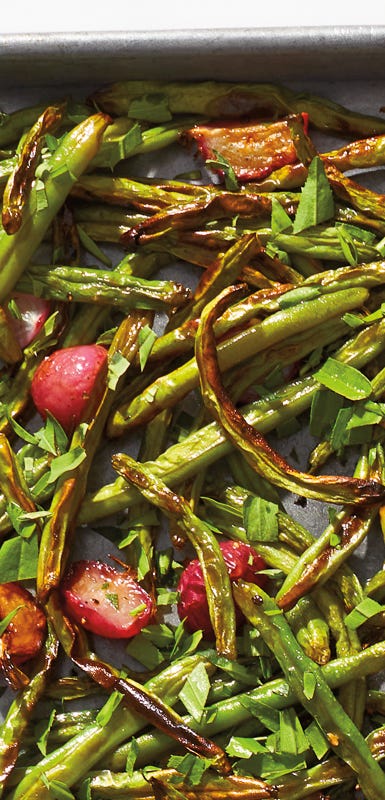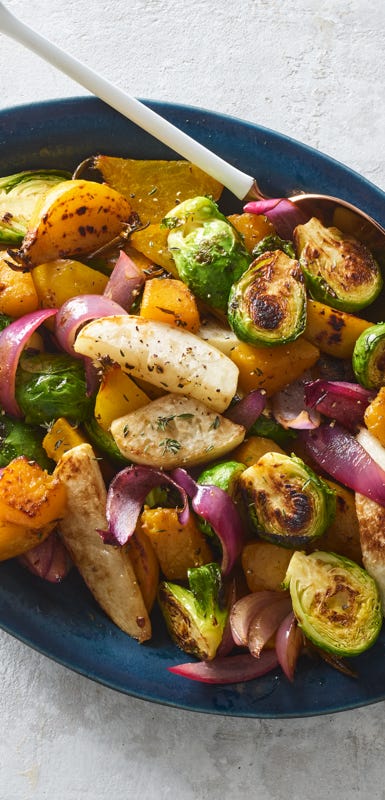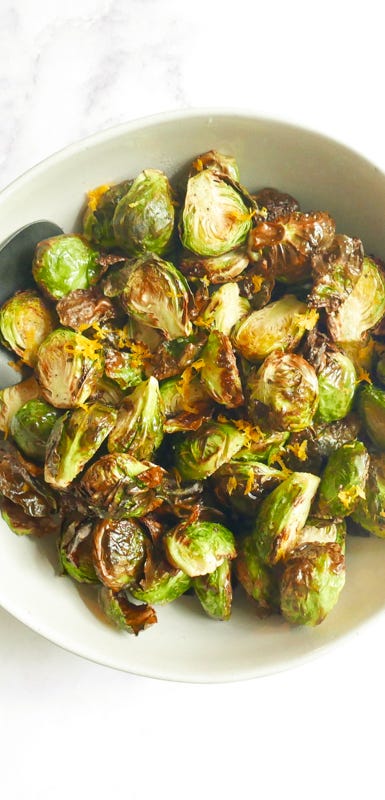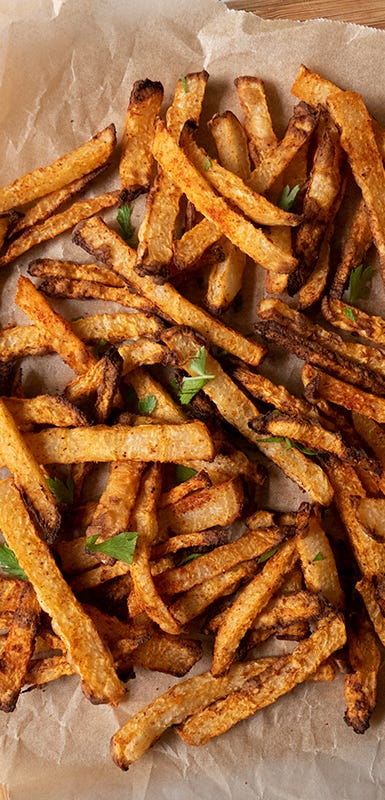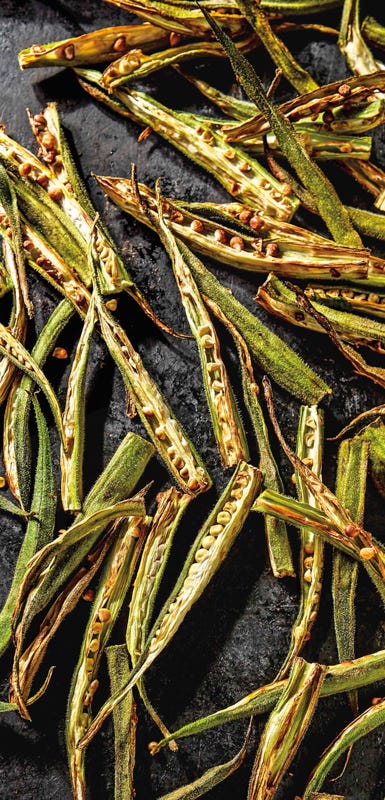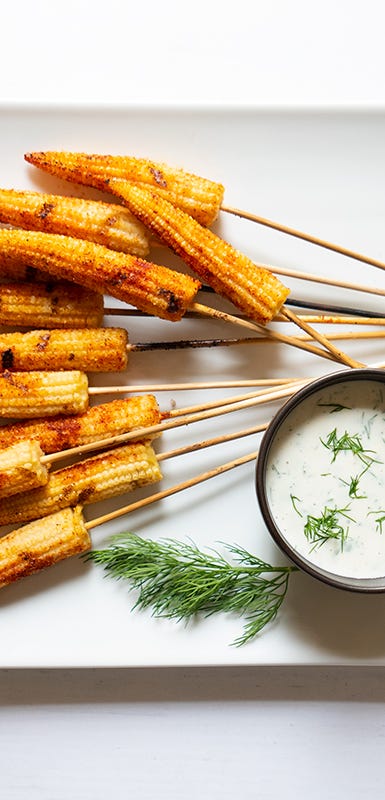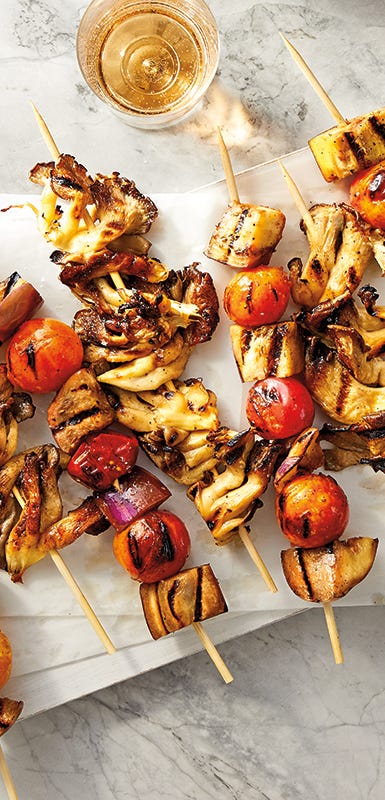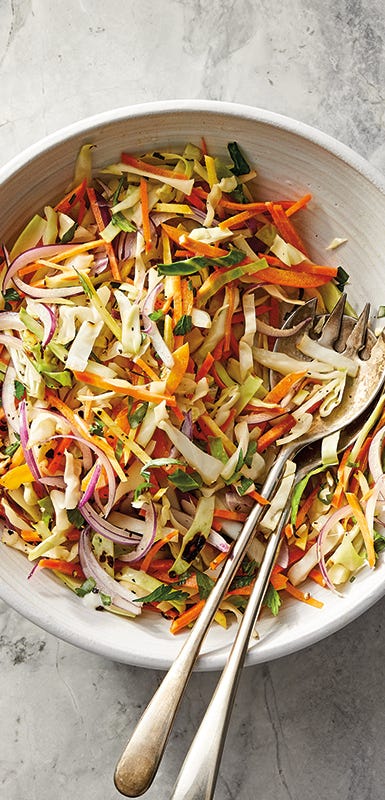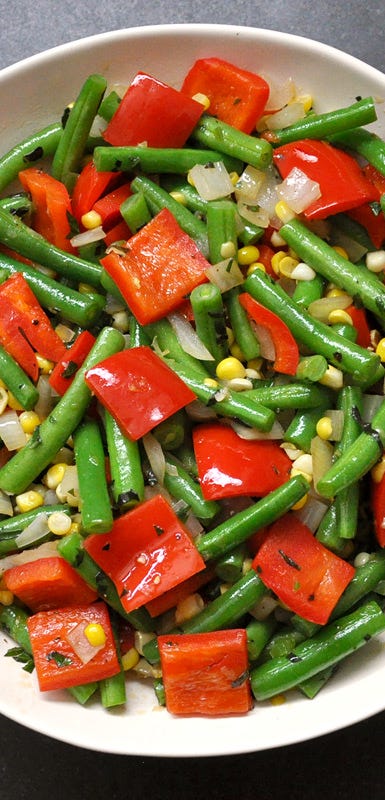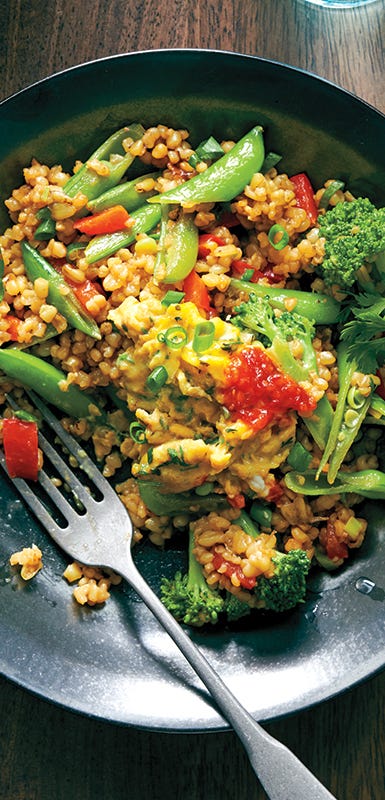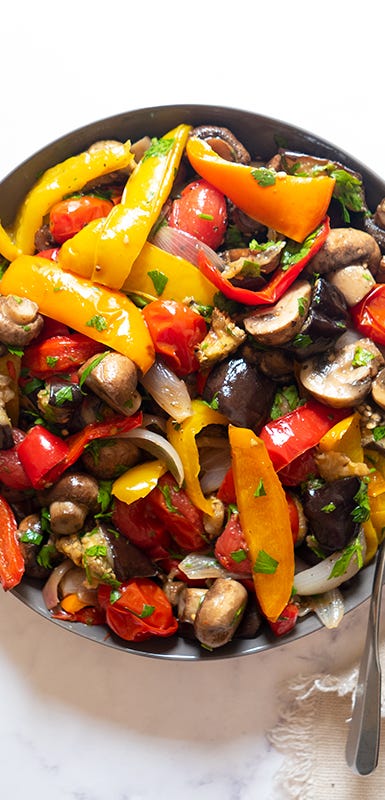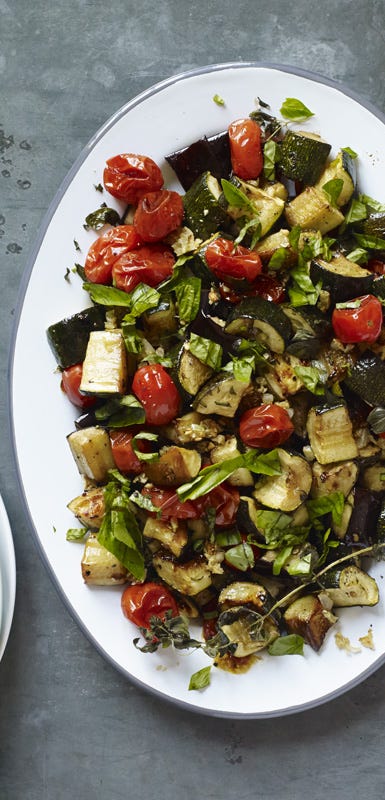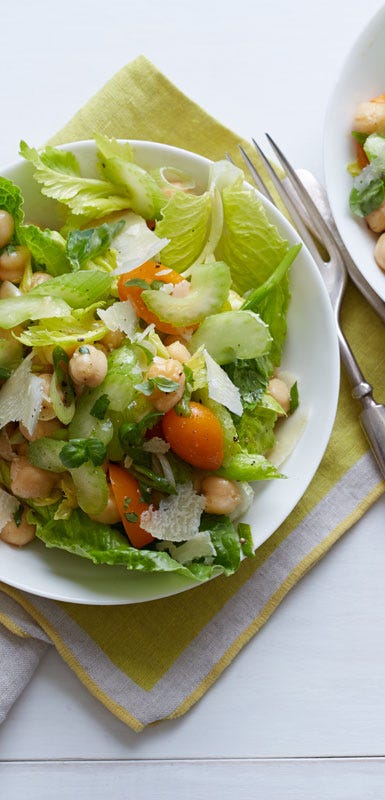How to make veggies irresistibly delicious
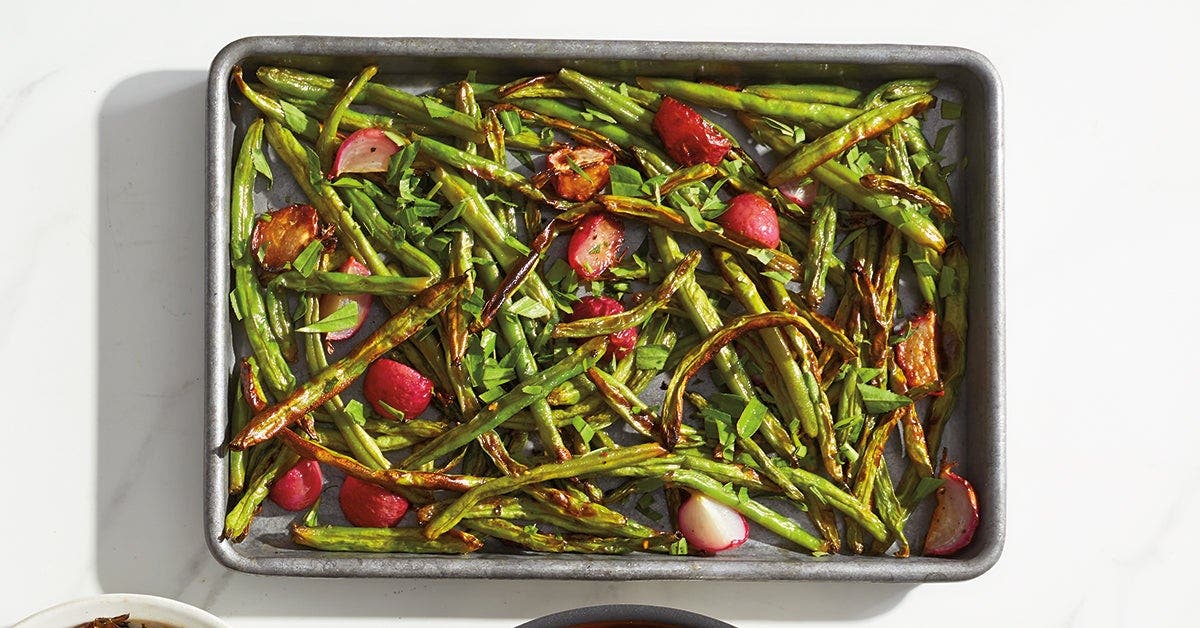
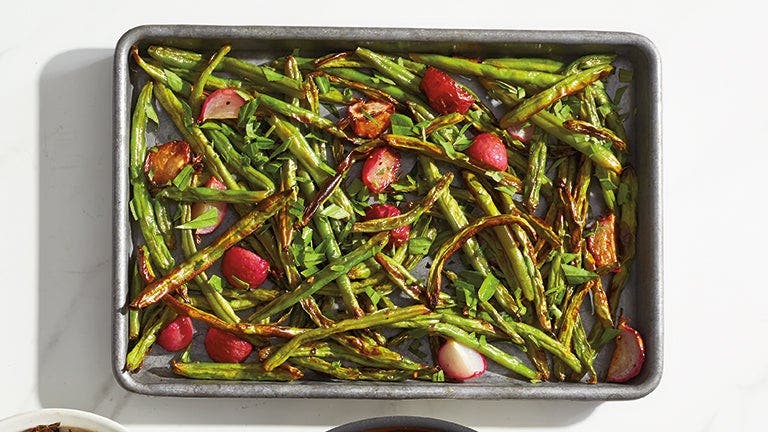
For some people, packing veggies into their day is second nature. But for others? The struggle is real. With a history of being steamed or boiled to a pulp, it’s no wonder veggies got a reputation for being bland. But it doesn’t have to be that way.
Non-starchy veggies come in a variety of colors, flavors, and textures, making them ultra-versatile. Make the most of their flavor potential with these simple cooking tips. Because if it doesn’t taste good, why bother eating it?
Roasting
It seems so basic, but roasting is one of the most delicious ways to cook most vegetables. The high heat caramelizes the veggie, bringing out not only its inherent sweetness but also a range of textures. Think of roasted broccoli with crispy tips and tender stems or meltingly soft onions.
Make a big batch of roasted vegetables with just cooking spray, salt, and black pepper to eat throughout the week. Add them to pastas, grain bowls, stir-fries, or eat them straight as a simple side dish. These big batches not only make for great meal prep, but they’re also a simple way to use up whatever veggies you have languishing in your fridge.
Key tips for roasting vegetables:
- Preheat your oven to 400 to 425°F. This blast of heat is low enough to cook even the most dense veggies on the inside but also high enough to caramelize the outsides.
- Use a pan with low sides, like a rimmed baking sheet/sheet pan. This allows the hot air in the oven to reach the food and the moisture from the food to evaporate better, leaving behind nicely browned food.
- Space the veggies out on your sheet pan. If they’re squeezed in too tightly, they’ll just steam and turn out floppy and pale.
- To brown and crisp any veggies when roasting, you need a bit of fat, whether that’s cooking spray or a light coating of oil.
- Cut the veggies into relatively equal sized and shaped pieces to ensure they all cook at the same rate.
Air-Frying
Air-frying is one of the hottest (food) topics right now. Some people swear by it, while others are hesitant to invite yet another gadget into their kitchen. If you have the space, they can be a game changer, especially when it comes to making vegetables extra tasty without actually plunging them into hot oil.
How does one fry using air, you ask? The basic principle behind it is that instead of hot bubbling oil circulating around food like in traditional frying, hot air circulates around said food to achieve a crispy, crunchy texture. You do need a bit of fat to achieve this, usually a spritz of cooking spray, but it’s a fraction of the amount absorbed by food when deep frying.
Key tips for air-frying vegetables:
- Preheat the air fryer. Starting the veggies out at a hotter, steady temp will also get you crispier results and more even cooking.
- Don’t crowd the basket for maximum air flow around the food (space between pieces of food = crispier results).
- Air fryers are not only great for cooking veggies from scratch, but are also great for re-crisping formerly crunchy foods like fries that have gone cold and limp.
- For most recipes, you’ll need to shake the fryer or stir or flip the foods in the basket so that it browns evenly.
- Don’t try to air-fry anything that’s battered or can drip down through the holes in the basket.
Grilling
The inherent sweetness of veggies pairs so well with the smoky char they get from a turn on the grill. Once you’ve got that fire going, feel free to throw extra veggies on there for some meal prep to help you out later in the week.
Key tips for grilling vegetables:
- Just like when you’re roasting or air-frying vegetables, try to give your veggies a bit of breathing room on the grill so the intense heat can get around them and you don’t wind up steaming your vegetables.
- For veggies that are smaller or might slip through the grates, use a grilling basket or skewer them.
- To figure out whether to grill the veggie on a very hot fire or a more moderate one, consider how hard or dense the veg is. If it’s one that’s softer or more watery, you’ll want to go fast and furious on a hotter flame (e.g. tomatoes, zucchini). If it’s one that’s a little denser, you’ll want to go with a medium flame to give it time to cook through to the center without completely scorching the outside (e.g. eggplant, cauliflower, carrots).
- If making vegetable kebabs, resist the temptation to mix up the veggies on each skewer and instead put the same veggies together on each skewer. Although the rainbow look is gorgeous, many of the veggies won’t cook at the same rate, so you’ll wind up with undercooked onions and burnt up tomatoes.
- Get creative with the non-starchy veggies you throw onto the grill. Zucchini, bell peppers, and onions are great, but try shaking things up by tossing baby corn, radishes, cabbage, or broccoli on there too.
Stir-Frying
For a lot of home cooks, a stir-fry can be a great fallback option for busy weeknights. Cooking over high heat means it comes together quickly and everything cooking in one pan means easy cleanup. Plus, anything goes when it comes to this dish, making it endlessly adaptable and another great way to use up loads of different veggies and herbs before they go kaput on you.
Key tips for stir-frying vegetables:
- Use relatively high heat in order to coax the most flavor out of the veggies. Remember this whole process should go pretty quickly.
- Stir-fries aren’t called “stir” fries for nothing. Because of the high heat, you’ll want to keep the veggies moving in the skillet so they cook evenly and don’t scorch or burn.
- No wok? No problem. A 12- or 14-inch skillet will work too. Just don’t be tempted to use a big pot. The high sides will prevent the water from evaporating as the veggies cook, resulting in a steamy, wet pile of vegetables instead of nicely browned ones.
- Add vegetables to the skillet from the hardest to most delicate so they all finish cooking at the same time. For example, you’ll want to get broccoli in there first, but leave the baby spinach for just wilting toward the end.
- Not sure what can go into a stir-fry? Some of our fave non-starchy veggies to toss into the pan are baby corn, bamboo shoots, greens, Brussels sprouts, broccoli, cabbage, carrots, ginger, kale, jicama, pea shoots, slaw mix, bell peppers, onions, scallions, snow peas, string beans, spinach, and water chestnuts.
Marinating
When you hear the word “marinate” you probably think of meat, but flavor is flavor and there’s no reason veggies can’t benefit from a soak in a tasty mixture too. Think of it as a sort of cousin to pickling but quicker and a little easier. Marinating vegetables amps up their flavor exponentially and makes them perfect for tossing into pastas, salads, grain bowls, onto sandwiches, or even just snacking on all by themselves.
Key tips for marinating vegetables:
- For the marinade, lean on ingredients that have ZeroPoints™ values like vinegars, citrus juices, herbs (dried or fresh), garlic (powdered or minced), and spices. You can also add a bit of olive oil to the mixture as well.
- Mix together your marinade ingredients and toss them with the vegetables, making sure they’re well coated. Let them sit at room temperature for at least 1 hour or cover and refrigerate them for up to 3 or 4 days.
- Uncooked veggies that are great to marinate are tomatoes, cucumbers, zucchini, summer squash, jicama, kohlrabi, celery, fennel, or artichoke hearts packed in water or frozen and thawed.
- Some veggies are best cooked first (grilled or roasted) then marinated, like eggplants, mushrooms, beets, bell peppers, cauliflower, or green beans. Cooking them first makes them more tender and “absorbent” so they suck up all the flavors in the marinade.

